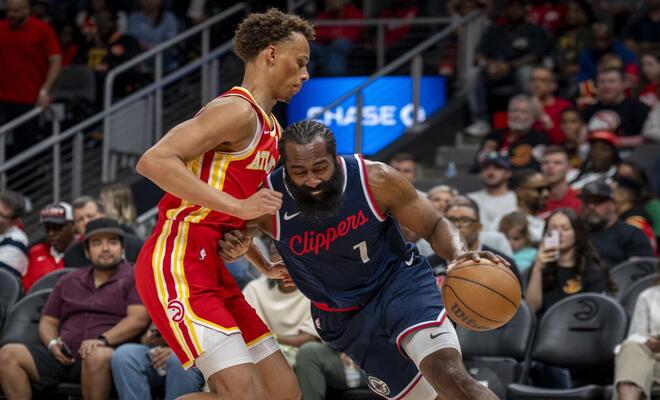-
 August 19, 2025, 7:00 pm
August 19, 2025, 7:00 pmLast Updated on October 6, 2025 12:16 am by Aaron Bruski | Published: August 19, 2025
This is the nitty-gritty, the stuff that separates the guys who win their leagues from the guys who are just along for the ride. Head-to-Head fantasy basketball isn’t a game of luck; it’s a game of strategy, psychology, and relentless optimization. It’s a series of weekly sprints, and if you think you can win without a plan, you’re already losing.
You see, the H2H format is a beautiful beast. It’s a microcosm of the NBA season itself, with its weekly matchups, its triumphs, and its gut-wrenching losses. Unlike roto, where everything has an impact on your season-long success, a catastrophic week in H2H might be something you can move on from, but in some cases it could be season-ending as well. H2H is about contained chaos. A bad shooting night or a key injury in one week doesn’t doom your year in most scenarios; it just makes the next week’s battle that much more important. This format rewards the active manager, the one who is constantly tinkering, streaming, and plotting. It’s for the competitor.
In this deep dive, we’re going to break down the H2H landscape from the ground up. We’ll move from the philosophical underpinnings of a championship build to the granular, week-to-week tactics that will earn you a spot in the playoffs. So, grab your draft boards, turn off your phone, and let’s get serious.
The Pre-Draft Foundation
Your championship isn’t won on draft night. It’s won in the weeks and months leading up to it. The draft is just the execution of a well-researched, flexible plan.
Know Your League’s DNA
Before you even think about a player, you need to understand the rules of the game you’re playing. This is more than just knowing it’s 9-cat. You need to read the fine print like a lawyer.
Roster Settings: How many guards, forwards, and centers can you roster? Are there limits? The existence of a G/F/C setup vs. the traditional PG/SG/SF/PF/C can drastically change the value of certain players. A player with multiple-position eligibility, like a guard who can also be slotted in as a forward, is gold because it gives you more flexibility on heavy game nights.
Waiver Wire and Transactions: Is it a continuous waiver wire or do you have a daily/weekly limit? Is there a Free Agent Acquisition Budget (FAAB)? These settings determine your streaming strategy. In a league with a daily limit on transactions, you have to be much more selective with your streamers. A league with no limits and a deep free agency pool is a streamer’s paradise.
Injury Spots (IL vs. IL+): This is a game-changer. An IL spot allows you to hold a player who is officially listed as “out.” An IL+ spot is a fantasy manager’s best friend, allowing you to stash a player who is “day-to-day” or even “doubtful.” This can be a huge advantage for hoarding high-upside players with short-term injuries, effectively giving you an extra roster spot. Some platforms have an IR Spot that functions closely to the IL Spot, but might have one or two differences.
Playoff Structure: What’s your league’s playoff schedule? Does the fantasy regular season end in Week 22 or 23? Knowing this helps you plan for the home stretch. You don’t want to be making a bunch of moves for players with a great schedule in Week 24 when your playoffs are already over.
Know Your Competition
The players on your opponent’s roster are not just names; they are a window into their fantasy soul. You need to be a psychologist on draft day.
The Homer: This is the most common archetype. They’ll reach for their favorite team’s players, often a full round or two early. If you’re in a league with a lot of Thunder fans, you can bet that a player who should be a mid-round pick is going to be gone much sooner. Use this to your advantage. Let them overreach and grab a player you love at an unbelievable value as a result.
The Analytics Nerd: This manager lives by the spreadsheet. They’re going to draft based on projected value and will rarely stray from their pre-draft rankings. They’re predictable, which makes them beatable. You can often anticipate who they’re targeting and plan accordingly.
The Recency Bias Guy: This person drafted their team based on what they saw in the last month of the previous season or the preseason. They will take a hot rookie or a player with a great end-of-year run way too early. They don’t have a deep understanding of a player’s full-season value, which is a flaw you can exploit.
The Power of a Pre-Ranked Board
Want to continue advancing your knowledge of H2H Strategy? You’ll need to have an NBA FantasyPass membership or purchase the Draft Guide. Click here to learn more and sign up!
Premium Access Required
📢 Want More? 📢
🏠 Go to the Draft Guide Home Page Here
 Join our Discord: Click Here to Join!
Join our Discord: Click Here to Join!📡 Download the SportsEthos App to get real-time alerts and updates:
Get the SportsEthos App (iOS App Store) Get the SportsEthos App (Google Play)
 Follow us on Twitter: @EthosFantasyNBA
Follow us on Twitter: @EthosFantasyNBA🏆 Join our premium community built on integrity, competition, and winning. Let’s crush this season together.
Get the NBA FantasyPass!Join the SportsEthos team! Fill out an application by clicking here!
